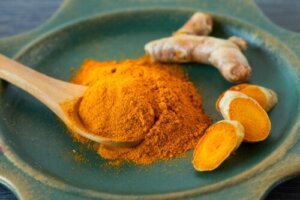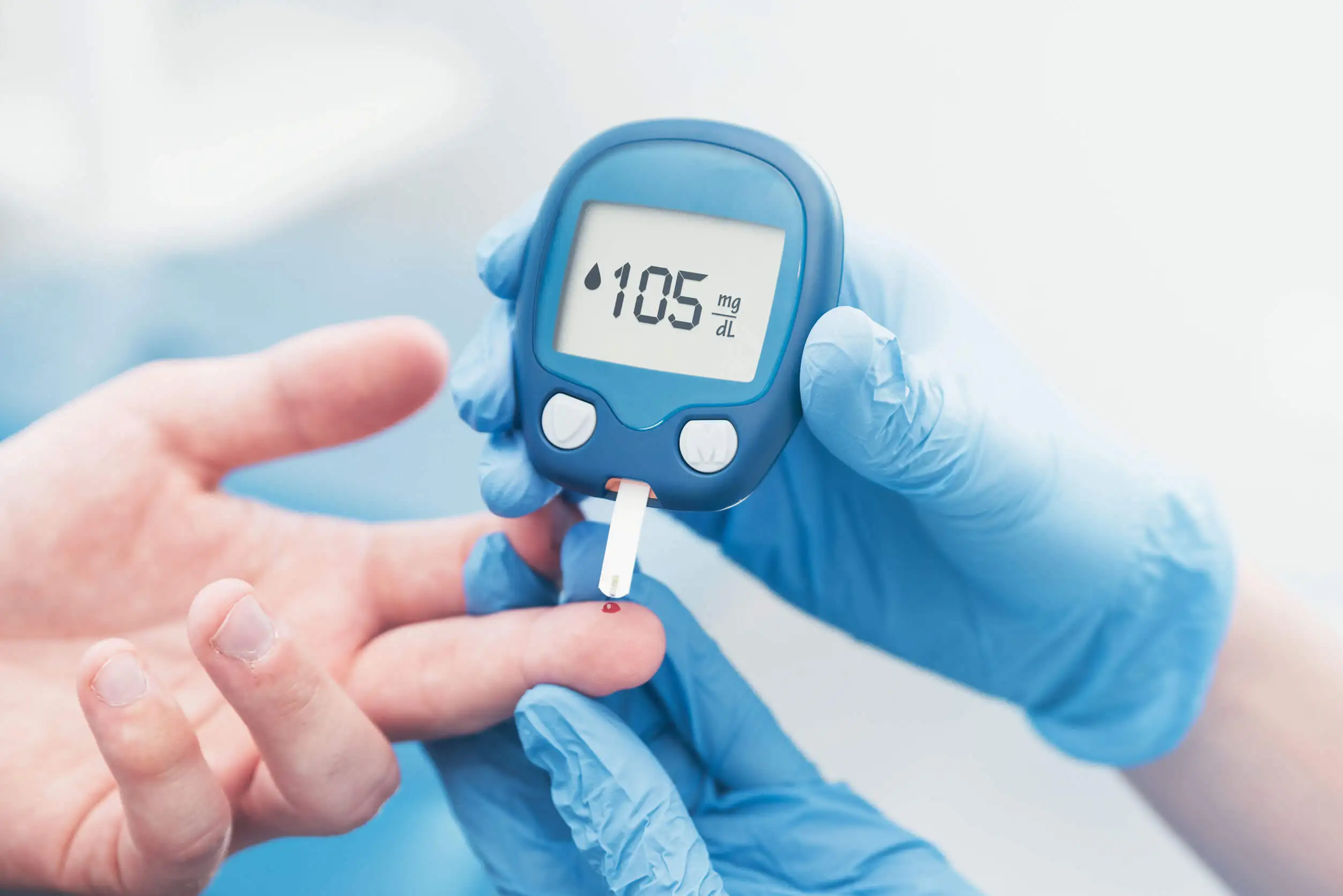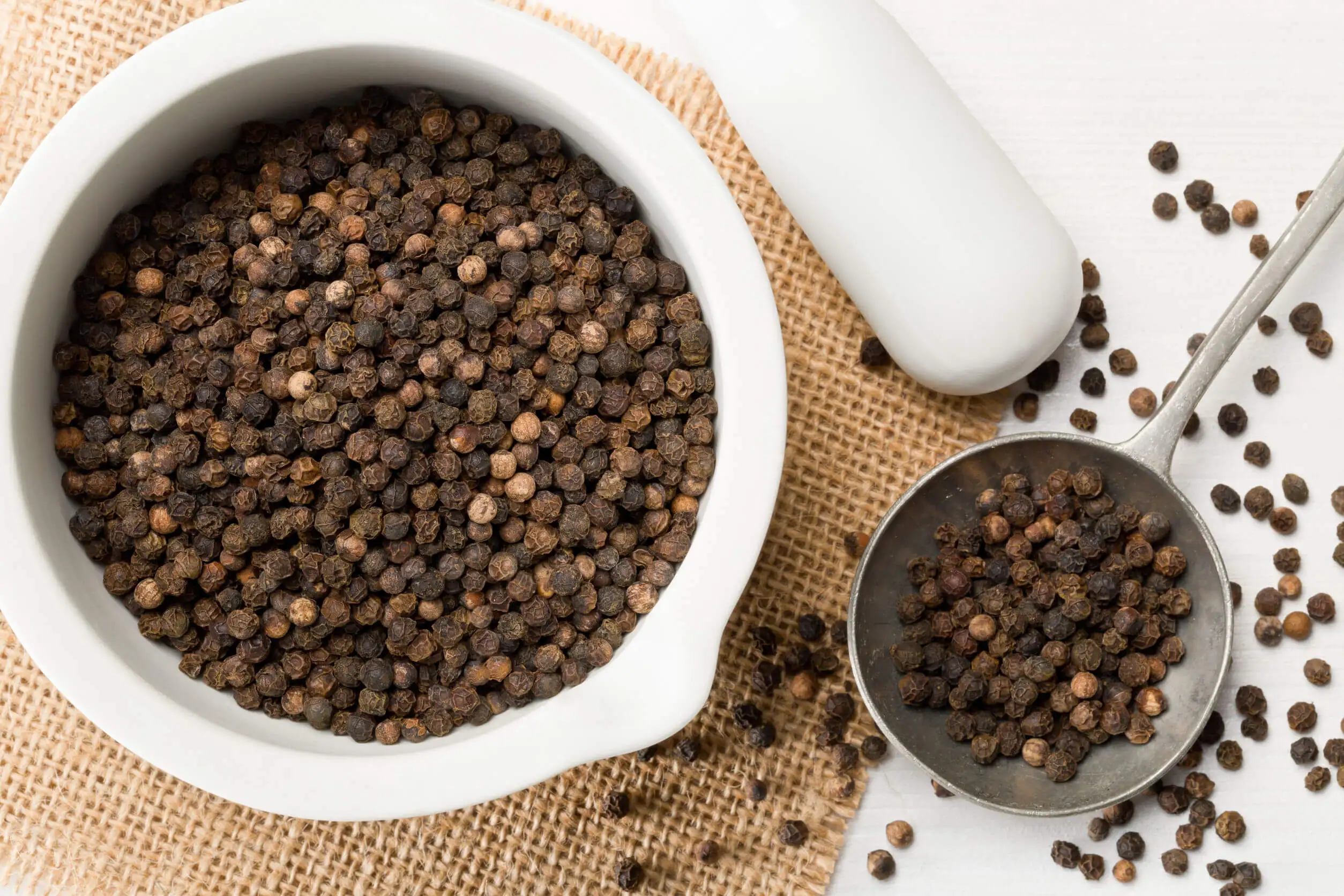Does Turmeric Help Prevent Diabetes? This is What Science Says


Reviewed and approved by the doctor Leonardo Biolatto
Turmeric (Curcuma longa) is one of the most valued spices for its potential to reduce the risk of diabetes. Although it has other medicinal applications, it has gained popularity due to research that associates its intake with glycemic control and the prevention of associated complications.
In particular, it has been determined that curcumin – its main active compound – contributes to the reduction of insulin resistance, in addition to improving metabolic health. On the other hand, it fights inflammation, oxidative stress and other factors that compromise the well-being of people at risk of diabetes.
In this regard, a review shared in Current Topics in Medicinal Chemistry concluded that curcumin has anti-diabetic effects, while acting as an antioxidant, neuroprotective and anti-inflammatory. Want to know more about these properties? Let’s take a closer look.
Turmeric, a spice with the potential to prevent diabetes
Turmeric is also known as “the golden spice” or “Indian saffron”. It is popular in Ayurvedic medicine, as since ancient times it has been a staple in the development of remedies to reduce ailments, prevent chronic diseases, and increase energy levels.
Specifically, it’s composed of bioactive substances with potential to promote health and well-being. According to edition 2 of the book Herbal medicine: biomolecular and clinical aspects, these comprise the following:
- Protein
- Polysaccharides
- Fatty acids
- Sesquiterpenes
- Volatile oil with turmerone
- B complex vitamins
- Carbohydrates and dietary fiber
- Curcuminoids, among which curcumin, demethoxycurcumin, 5′-methoxycurcumin and dihydrocurcumin
- Other volatile oils, such as d-α-phellandrene, d-sabinene, cinol, borneol and zingiberene
- Minerals such as calcium, iron, phosphorus, potassium, and sodium
Because of this composition, it’s not surprising that many of turmeric’s properties are backed by science. And while it is not a first-choice treatment when it comes to addressing conditions, it has been recognized as one of the best supplements.
In terms of diabetes, there are several studies evaluating its efficacy. A review of studies shared in the journal Nutrients made interesting findings. Specifically, it determined that numerous in vitro and in vivo investigations have provided strong evidence for the anti-diabetic efficacy of curcumin.
The data reported suggests that this polyphenol has therapeutic potential to prevent diabetes and reduce its complications. Its mechanism of action is thought to be the modulation of several signaling molecules linked to inflammation. However, given the complexity of this condition, it is not entirely clear.

We think you may be interested in reading this, too: Citrus Smoothie with Turmeric To Strengthen Your Defenses
Turmeric, metabolic syndrome, and diabetes prevention
The benefits of turmeric in diabetes prevention are largely due to its ability to combat metabolic syndrome. This problem groups together a series of altered chemical processes, including insulin resistance, high glucose levels, lipid disorders and obesity.
Research shared through the International Journal of Endocrinology and Metabolism found that curcumin has antihyperglycemic and insulin-sensitizing effects, reducing insulin resistance and associated complications.
When there’s insulin resistance, muscle and liver cells fail to absorb glucose from the blood adequately for use as an energy source. As a result, glucose rises, pancreas function becomes impaired, and type 2 diabetes emerges.
A systematic review reported in Longhua Chinese Medicine found that turmeric has the potential to control risk factors associated with metabolic syndrome. This includes blood glucose levels, cholesterol, triglycerides, inflammation and body mass index.
This is also supported by a review of studies shared in Frontiers in Endocrinology, which concluded that curcumin is a natural, safe and low-cost anti-diabetic and anti-inflammatory. Its effect is attributed to its ability to suppress oxidative stress and the inflammatory process.
To be more precise, the researchers found that it reduces fasting blood glucose, glycosylated hemoglobin, body mass index, serum C-reactive protein, total cholesterol and triglycerides in patients with type 2 diabetes mellitus.
It also prevents complications associated with diabetes
In addition to reducing the risk of developing type 2 diabetes, turmeric also benefits patients already suffering from this disease. Given its properties, it can minimize the risk of associated complications, such as non-alcoholic fatty liver disease, diabetic neuropathy, and nephropathy, among other conditions.
- Research shared through Pharmacy Practice reported that curcumin extract has therapeutic potential against non-alcoholic fatty liver disease. However, it’s not a substitute for medical treatment or lifestyle changes.
- Through the Indian Journal of Pharmaceutical Sciences, researchers reported that curcumin improved the hypoglycemic effect of insulin and, in turn, provides a protective effect against the onset of diabetic neuropathy. This complication causes lesions in the peripheral nerves that send signals to and from the extremities of the body.
- Animal studies, reported in BioMed Research International, speak of curcumin’s potential to combat diabetic nephropathy. In particular, an antifibrotic effect is attributed to it, which shows promise against this complication of diabetes. Robust human studies are required to prove this benefit.
- Although evidence is limited and human studies are lacking, curcumin is believed to have the potential against erectile dysfunction that occurs due to diabetes. A study in rats reported in The Journal of Sexual Medicine made promising findings.
Curcumin bioavailability: A drawback
Despite the wide variety of studies linking curcumin with positive effects in patients with diabetes, there’s a major drawback: its bioavailability. What does this mean? A bioavailable substance is one that is absorbed and reaches the bloodstream for further circulation in the body.
When administered intravenously, a substance is more likely to generate the optimal effect. However, through oral consumption, this ability is diminished.
Turmeric is no exception. Through oral intake, there’s little bioavailability of curcumin, which is the active compound linked to its main properties.
What happens is that there’s poor intestinal absorption, and it’s broken down and eliminated quickly. Consequently, it is difficult to exert its beneficial effects. Even so, there is a trick that can work to reduce this inconvenience.
A study in Foods magazine details that the simultaneous consumption of curcumin with piperine -the active compound of black pepper- increases its bioavailability up to 2000%. For this reason, it’s common to find both components in commercial supplements.

Possible side effects of turmeric
The consumption of turmeric and curcumin supplements is considered safe for most healthy adults. The U.S. Food and Drug Administration (FDA) approved its use due to its good tolerability and efficacy.
Suggested doses range from 4000 to 8000 mg per day.
However, its consumption should be moderate, as too much can cause nausea, digestive discomfort, diarrhea, gas, yellow stools, and headaches. The spice is contraindicated in the following cases:
- Patients with heartburn and acid reflux.
- Pregnant and lactating women (consult your doctor first).
- People with gallbladder disease.
- Patients taking anticoagulants, antibiotics, antidepressants, cardiovascular or anti-cancer drugs.
- People who are about to undergo surgery.
Like this article? You may also like to read: 5 Impressive Anti-inflammatory Remedies with Turmeric
Is turmeric a good supplement for diabetes?
Including turmeric in the regular diet can contribute to the prevention of diabetes and its complications. Despite this, it should be taken into account that its oral intake implies a low bioavailability of curcumin. Therefore, it should be consumed simultaneously with piperine, either naturally or in supplements.
In any case, it should be noted that turmeric does not replace drugs or treatments to prevent and treat diabetes. Maintaining a healthy lifestyle and following the doctor’s recommendations are essential.
The use of this supplement is merely complementary.
All cited sources were thoroughly reviewed by our team to ensure their quality, reliability, currency, and validity. The bibliography of this article was considered reliable and of academic or scientific accuracy.
- Zhang DW, Fu M, Gao SH, Liu JL. Curcumin and diabetes: a systematic review. Evid Based Complement Alternat Med. 2013;2013:636053. doi: 10.1155/2013/636053. Epub 2013 Nov 24. PMID: 24348712; PMCID: PMC3857752.
- Nabavi SF, Thiagarajan R, Rastrelli L, Daglia M, Sobarzo-Sánchez E, Alinezhad H, Nabavi SM. Curcumin: a natural product for diabetes and its complications. Curr Top Med Chem. 2015;15(23):2445-55. doi: 10.2174/1568026615666150619142519. PMID: 26088351.
- Prasad S, Aggarwal BB. Turmeric, the Golden Spice: From Traditional Medicine to Modern Medicine. In: Benzie IFF, Wachtel-Galor S, editors. Herbal Medicine: Biomolecular and Clinical Aspects. 2nd edition. Boca Raton (FL): CRC Press/Taylor & Francis; 2011. Chapter 13. Available from: https://www.ncbi.nlm.nih.gov/books/NBK92752/
-
Pivari F, Mingione A, Brasacchio C, Soldati L. Curcumin and Type 2 Diabetes Mellitus: Prevention and Treatment. Nutrients. 2019 Aug 8;11(8):1837. doi: 10.3390/nu11081837. PMID: 31398884; PMCID: PMC6723242.
- Hewlings, S., & Kalman, D. (2017). Curcumin: A Review of Its Effects on Human Health. In Foods (Vol. 6, Issue 10, p. 92). MDPI AG. https://doi.org/10.3390/foods6100092
- Ghorbani Z, Hekmatdoost A, Mirmiran P. Anti-hyperglycemic and insulin sensitizer effects of turmeric and its principle constituent curcumin. Int J Endocrinol Metab. 2014 Oct 1;12(4):e18081. doi: 10.5812/ijem.18081. PMID: 25745485; PMCID: PMC4338652.
- Laurindo, L. F., Barbalho, S. M., Joshi, R. K., Rezende, B. de A., de Alvares Goulart, R., Guiguer, E. L., & Araújo, A. C. (2021). Curcuma longa and curcumin on metabolic syndrome: a systematic review. In Longhua Chinese Medicine (Vol. 4, pp. 32–32). AME Publishing Company. https://doi.org/10.21037/lcm-21-25
- Marton, L. T., Pescinini-e-Salzedas, L. M., Camargo, M. E. C., Barbalho, S. M., Haber, J. F. dos S., Sinatora, R. V., Detregiachi, C. R. P., Girio, R. J. S., Buchaim, D. V., & Cincotto dos Santos Bueno, P. (2021). The Effects of Curcumin on Diabetes Mellitus: A Systematic Review. In Frontiers in Endocrinology (Vol. 12). Frontiers Media SA. https://doi.org/10.3389/fendo.2021.669448
-
Maithili Karpaga Selvi N, Sridhar MG, Swaminathan RP, Sripradha R. Efficacy of Turmeric as Adjuvant Therapy in Type 2 Diabetic Patients. Indian J Clin Biochem. 2015 Apr;30(2):180-6. doi: 10.1007/s12291-014-0436-2. Epub 2014 May 8. PMID: 25883426; PMCID: PMC4393385.
-
White CM, Lee JY. The impact of turmeric or its curcumin extract on nonalcoholic fatty liver disease: a systematic review of clinical trials. Pharm Pract (Granada). 2019 Jan-Mar;17(1):1350. doi: 10.18549/PharmPract.2019.1.1350. Epub 2019 Mar 4. PMID: 31015871; PMCID: PMC6463416.
- Saadati, S., Sadeghi, A., Mansour, A. et al. Curcumin and inflammation in non-alcoholic fatty liver disease: a randomized, placebo controlled clinical trial. BMC Gastroenterol 19, 133 (2019). https://doi.org/10.1186/s12876-019-1055-4
- Kulkarni, S., & Dhir, A. (2010). An overview of curcumin in neurological disorders. In Indian Journal of Pharmaceutical Sciences (Vol. 72, Issue 2, p. 149). OMICS Publishing Group. https://doi.org/10.4103/0250-474x.65012
- Lu M, Yin N, Liu W, Cui X, Chen S, Wang E. Curcumin Ameliorates Diabetic Nephropathy by Suppressing NLRP3 Inflammasome Signaling. Biomed Res Int. 2017;2017:1516985. doi: 10.1155/2017/1516985. Epub 2017 Jan 17. PMID: 28194406; PMCID: PMC5282455.
- Draganski A, Tar MT, Villegas G, Friedman JM, Davies KP. Topically Applied Curcumin-Loaded Nanoparticles Treat Erectile Dysfunction in a Rat Model of Type-2 Diabetes. J Sex Med. 2018 May;15(5):645-653. doi: 10.1016/j.jsxm.2018.03.009. PMID: 29699754; PMCID: PMC8826927.
-
Hewlings SJ, Kalman DS. Curcumin: A Review of Its Effects on Human Health. Foods. 2017 Oct 22;6(10):92. doi: 10.3390/foods6100092. PMID: 29065496; PMCID: PMC5664031.
This text is provided for informational purposes only and does not replace consultation with a professional. If in doubt, consult your specialist.








